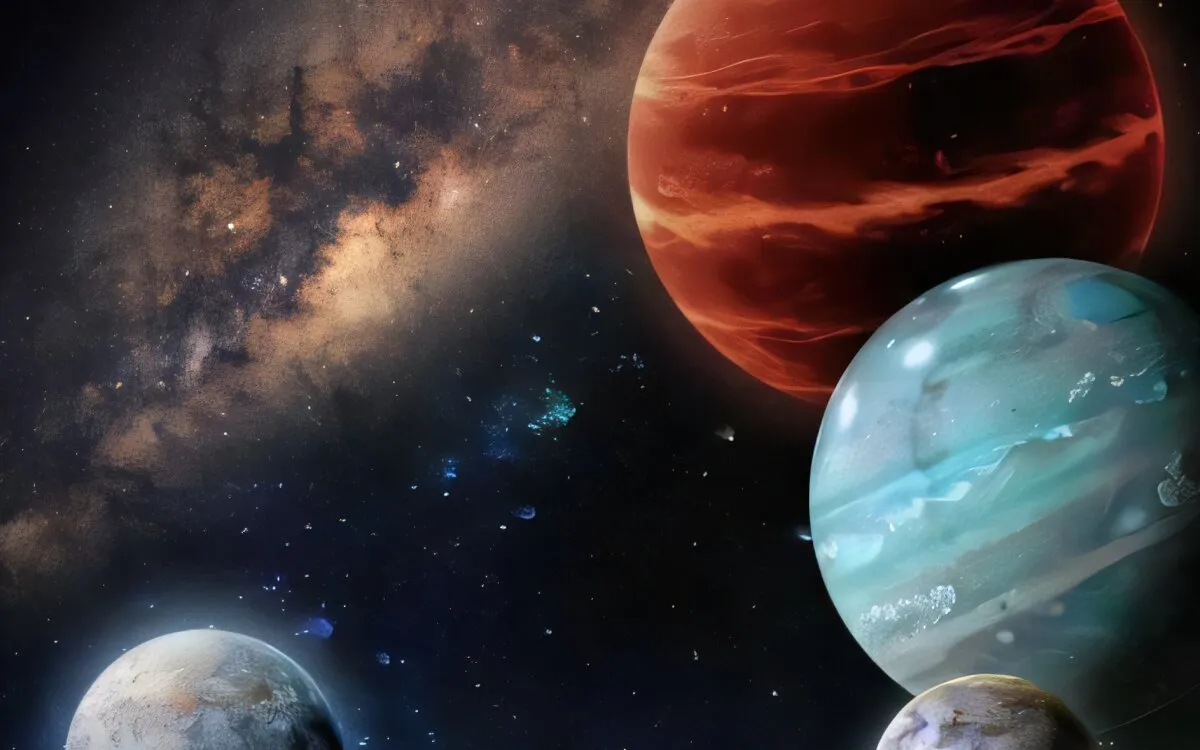
An international team of astronomers, including experts from the Center for Astrophysics | Harvard & Smithsonian (CfA), has made a remarkable discovery of a super-Earth—a planet approximately twice the size of Earth—orbiting its star at a distance greater than that of Saturn from the Sun. This finding underscores the diversity of planetary systems in the universe, showing that they can differ significantly from our own solar system.
Lead author Weicheng Zang, a CfA Fellow, stated, "We found a super-Earth—meaning it's larger than our home planet but smaller than Neptune—in a region where only planets thousands or hundreds of times more massive than Earth were previously detected." The team’s results are detailed in a recent publication in the journal Science.
The discovery of this distant super-Earth is particularly significant as it is part of a comprehensive study aimed at understanding the populations of planets across the Milky Way galaxy. By measuring the masses of various planets in relation to their host stars, the research team has unearthed new insights into the diversity of planetary systems.
The research utilized microlensing, a method where light from distant celestial objects is amplified by an intervening body, such as a planet. This technique is especially effective for identifying planets located at considerable distances—specifically, those situated between the orbits of Earth and Saturn. This groundbreaking study is the largest of its kind, featuring about three times more planets than previous microlensing studies and including planets that are approximately eight times smaller than those previously discovered.
The researchers relied on data from the Korea Microlensing Telescope Network (KMTNet), which comprises three telescopes located in Chile, South Africa, and Australia. This network allows for continuous monitoring of the night sky, facilitating the collection of crucial data. Professor Shude Mao from Tsinghua University and Westlake University in China remarked, "The current data provided a hint of how cold planets form. In the coming years, we expect our sample size to quadruple, enabling us to refine our understanding of how these planets form and evolve further."
Our solar system consists of four small, rocky inner planets—Mercury, Venus, Earth, and Mars—and four large, gaseous outer planets—Jupiter, Saturn, Uranus, and Neptune. Previous searches for exoplanets using various techniques, such as transiting planets from telescopes like Kepler and TESS, as well as radial velocity methods, have shown a variety of small, medium, and large planets in orbits closer to their stars than Earth.
The latest findings from the CfA-led team indicate that super-Earths are also prevalent in the outer regions of other planetary systems. Co-author Jennifer Yee from the Smithsonian Astrophysical Observatory noted, "This measurement of the planet population, ranging from sizes larger than Earth up to those resembling Jupiter, reveals that super-Earths in orbits beyond Earth's are abundant throughout the galaxy." This suggests that many planetary systems may not replicate our solar system's structure, particularly in regions akin to Jupiter's orbit.
The research team is also investigating the ratio of super-Earths to Neptune-sized planets. Preliminary findings indicate that there may be at least as many super-Earths as there are Neptune-sized planets. The study features contributions from other CfA researchers, including post-doctoral fellow In-Gu Shin, former Harvard undergraduate Hangyue Wang (currently at Stanford), and Sun-Ju Chung, a KASI scientist who spent a sabbatical at CfA from 2022 to 2023. Additionally, data from the Optical Gravitational Lens Experiment (OGLE) and the Microlensing Observations in Astrophysics (MOA) survey groups played a crucial role in characterizing the newly discovered planet.